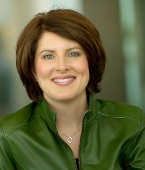
Even before COVID, independent Optometrists shared a common complaint. How do you see patients all day as well as manage staff and the business demands of the practice? The answer is often an Office Manager. Even with a small team, it is important that someone is leading the ship when the Owner is seeing patients.
How’s Right for the Job?
For many offices, the Office Manager can be someone who has shown interest in managing tasks and taking on a bigger role within the office. It is also possible to hire someone with an affinity for office management but doesn’t have optical experience.
I have seen some wonderful Office Managers come from other backgrounds and bring new insight and perspective to the practices they work in.
Ultimately, the main responsibility of the Office Manager is to be the contact person for staff and patients, in your absence. It is imperative that they have a consistent and direct line to you on a regular basis. The staff will be accountable to the Office Manager and the Office Manager will be accountable to you.
A great office manager can fill the gaps.
Just recently, a client mentioned that their associate’s appointment book was starting to look sparse in the week or two ahead.
They were looking for some guidance on how to approach staff. This is the perfect example of how an Office Manager could be of great assistance. In charge of overseeing the general business functioning of the clinic, the Office Manager will have independently identified this concern. The Office Manager will “huddle” will staff and brain storm action steps to get the appointments booked.
Often, when I am speaking to Office Managers, or even Practice Owners, they will express a concern about micromanaging the team. In fact, teams need managing – and even inspiring!
Recently, when mentoring a teammate in one office to become the Office Manager, we reviewed the action steps the team had already taken – getting caught up on recalls being the big one – and it appeared the team was being proactive. I asked if the team was also asking if there were other members in the household that were due for an eye exam that wanted to come in at the same time.
Particularly during COVID, it actually benefits the family and clinic if they come into the office at once and in their bubble. The future Office Manager graciously acknowledged that although they had done so in the past, they had stopped asking this question when patients were booking.
Now armed with a suggestion that could bring fresh perspective to the situation, the future Office Manager left our call to meet with her team to brainstorm ideas to get the schedule booked! I challenged her to do a similar exercise with the front desk staff in the spirit of unearthing ideas that had simply fallen off their radar.
This type of mentorship and coaching is necessary to transfer authority to the Office Manager, so that ultimately, the Office Manager can start independently assessing the business needs and acting accordingly. It takes some time and guidance, but the end result is well worth the effort.

KELLY HRYCUSKO
is the co-founder and managing partner of Simple Innovative Management Ideas (SIMI) Inc. and expert Practice Management contributor for Optik magazine. She can be reached at info@simiinc.com.






















